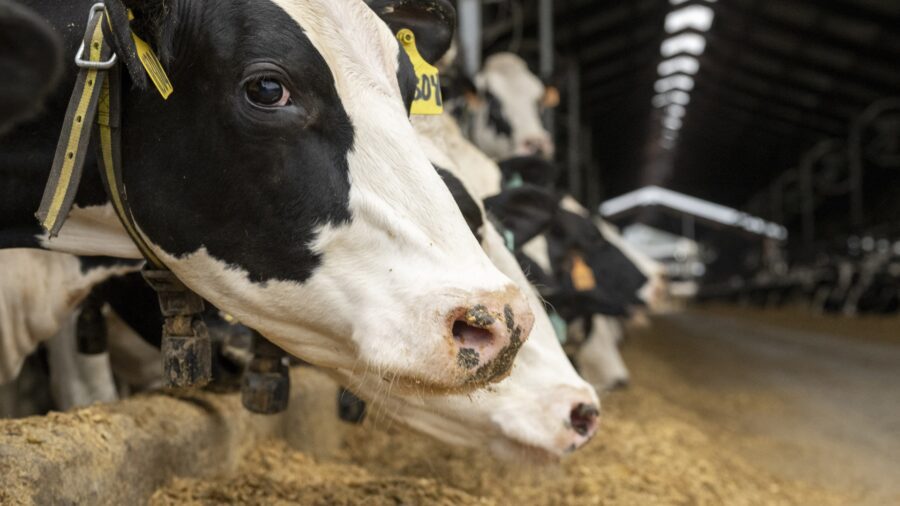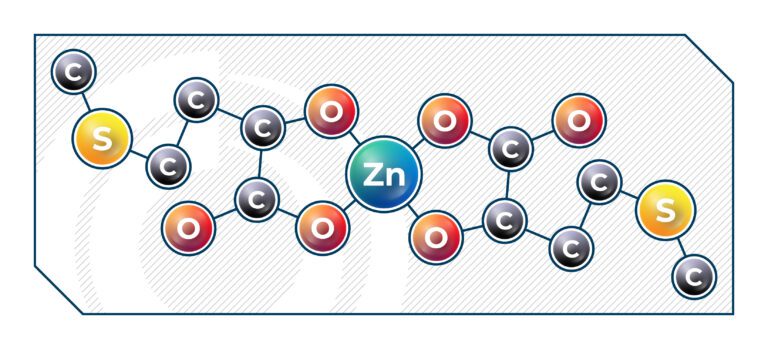Only One Is Bis-Chelated and Verified

In dairy nutrition, “chelates” are everywhere. The word is stamped on countless product labels, often used as shorthand for quality, bioavailability, and performance. But what does it really mean? And more importantly, can you prove it?
Here’s the hard truth: most organic trace minerals (OTMs) marketed as “chelates” have no verified structure. That means their efficacy is often assumed, not proven. And for nutritionists striving for precision and consistency in dairy performance, that’s a risk you shouldn’t have to take.
The Difference Is in the Bond
Chelation results from the binding of a mineral to an organic molecule at two or more points, often done to improve mineral absorption. However, not all chelates are equal, and not all behave predictably in the digestive tract.
Many OTMs on the market are based on complexes or weaker bond structures that can dissociate early in the digestive tract, exposing the mineral to antagonists like sulfates and even fiber types, all of which can render the mineral essentially unavailable to the animal. Many minerals on the market do not have a verified molecular structure. This leaves nutritionists to make decisions based on marketing claims alone instead of also considering the chemistry behind a mineral source.
What Makes MINTREX® Bis-Chelated Trace Minerals Unique
MINTREX® Bis-Chelated Trace Minerals are the only OTMs with a fully verified 2:1 bis-chelate structure, two molecules of HMTBa (hydroxy analogue of methionine) bonded to a single mineral ion (zinc, copper, or manganese).
We prove this structure through x-ray crystallography which defines the exact bonds, their lengths and angels of our molecule today.1 Because this structure was so unique, NOVUS petitioned to AAFCO and the Division of Animal Feeds with the US FDA Center for Veterinary Medicine to create a new definition which was granted in 20112. And in 2012, MINTREX® became the first and only mineral product to win the North American Animal Feed Ingredients Product Differentiation Excellence Award from Frost and Sullivan.2
So why is this important? We can prove to you what you’re paying for is actually what you get.
Figure 1
The molecular arrangement, shown in Figure 1, provides four critical advantages:
- Structural Confirmation
The bis-chelate structure of MINTREX® is confirmed and published. No assumptions, no guesses — just science you can trust.1 - Neutral Charge
The neutral molecule avoids unwanted chemical interactions in the gut, improving the odds of the mineral reaching the site of absorption intact for greater mineral tissue enrichment.3,4 - Consistent Stability
MINTREX® is tolerant to pH fluctuations and digestive challenges, ensuring more reliable bioavailability and utilization than other OTMs with unverified or unstable structures.3,5 - Methionine Bonus
The HMTBa ligands that form the chelate are not only protectors, they are a source of metabolizable methionine, which adds nutritional value and performance support for the animal.6
Why Structure Verification Matters to Performance
Think of mineral delivery like transporting money to the bank. You wouldn’t trust an unprotected van with no tracking system. You’d demand a secured armored vehicle with proof of delivery to insure your money arrives.
That’s what structure verification gives you: confidence.
Without it, you’re trusting that the mineral survives the digestive process and delivers what the label promises. Relying on such a gamble, particularly in high-performance dairy systems, where mineral precision influences health, fertility, and milk production, is something you cannot afford.
A New Standard for Product Evaluation
Requesting verified proof of a mineral source’s structure is a reasonable step toward ensuring product quality and performance. While not all suppliers may offer this level of transparency, MINTREX® Bis-Chelated Trace Minerals provides clear documentation, helping you feel confident in the value you’re delivering to your animals
With over 500 trials across species and consistent structure validation, MINTREX® delivers a science-backed alternative. Its confirmed chemistry helps nutritionists:
- Eliminate guesswork in mineral selection
- Improve mineral utilization and ROI
- Reduce dietary antagonism
- Lower supplemental methionine needs
- Simplify formulation strategies
Ask for Proof. Demand Bis-Chelation.
For field nutritionists and technical advisors, the next conversation starts with a simple question: “Can your current mineral supplier show you their mineral structure?”
This single question reframes the purchasing decision from label-based assumptions to evidence-based action. NOVUS’ ability to provide this information reinforces our commitment to intelligent nutrition and the Made of More™ promise.
If the answer is no, it’s time to rethink what your mineral source really means and what it should deliver. Contact your NOVUS representative today to strengthen your mineral strategy and support performance in your dairy operation.
References:
1 Rath, N. P, et al. 2005. Single crystal x-ray diffraction studies of MINTREX ZN and MINTREX CU. University of Missouri St Louis. Internal Technical Note to Novus International.
2 Ziggers, D. (2020, December 18). AAFCO accepts definition for chelated trace minerals. All About Feed. https://www.allaboutfeed.net/animal-feed/feed-additives/aafco-accepts-definition-for-chelated-trace-minerals/
3 Rode, T. 2023. Chelation chemistry comparison: Stability, structure, and biological relevance. Novus International, Inc. Internal Technical Slide Set.
4 Tucker, H. A. 2025. Bioavailability of different sources and doses of zinc using stable isotopes in weaned male Holstein calves. J. Dairy Sci. 108: 8971-8980.
5 Acosta, J, A., P. Ren, A. Provin, T. Rode, H. A. Tucker, and D. Hancock. 2023. Zinc from methionine hydroxy analog chelate is more effective in enriching tissues than Zinc from amino acid complex in growing pigs using stable isotopes. J. Anim. Sci. 101: 198-199 (abstract).
6 Feng, X., R. R. White, H. A. Tucker, and M. D. Hanigan. 2018. Meta-analysis of 2-hydroxy-4-methylthio-butanoic acid supplementation on ruminal fermentation, milk production, and nutrient digestibility. J. Dairy Sci. 101: 7182-7189.

Intelligent Nutrition for Your Business
More science. More insight. More inspiration. More ways for you to feed the world.





